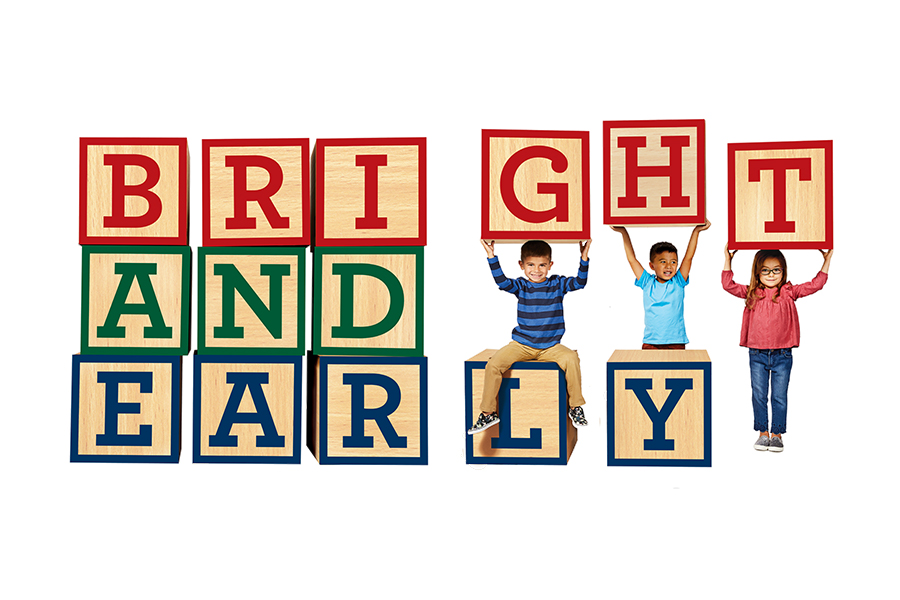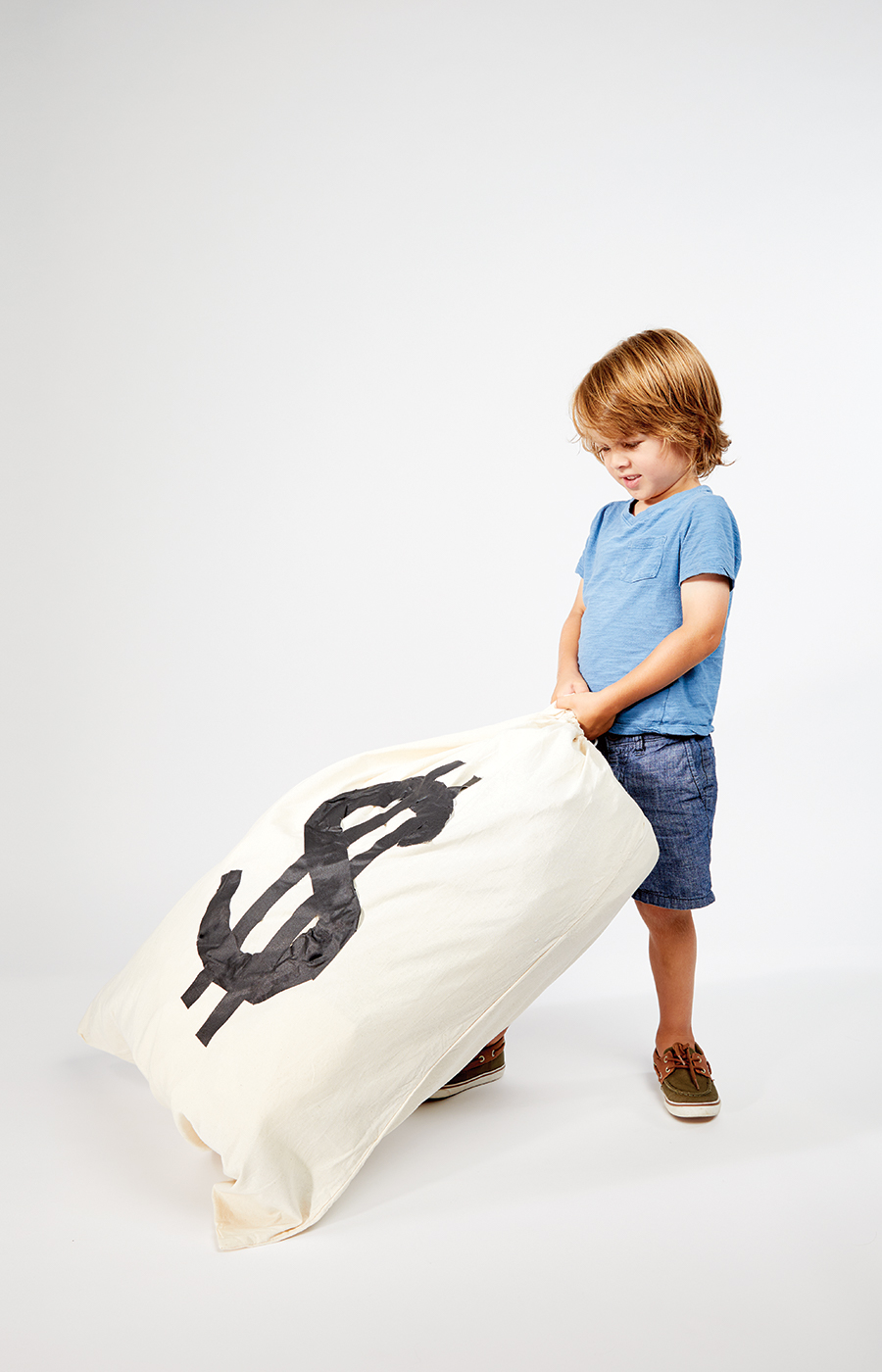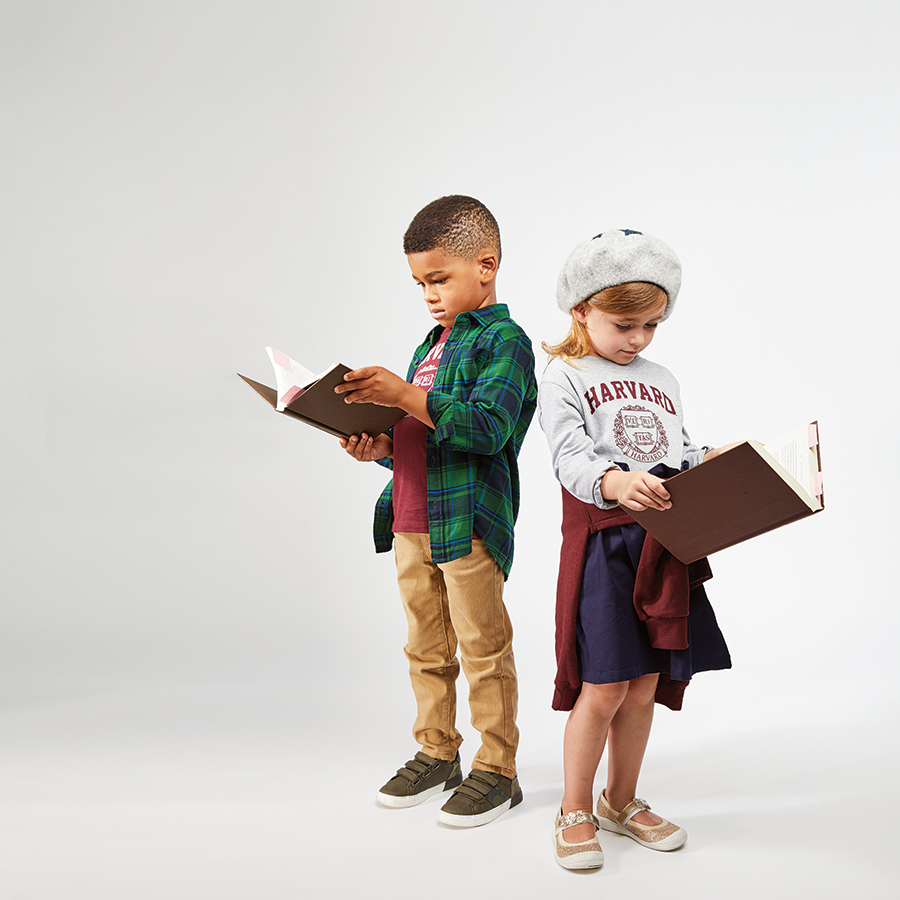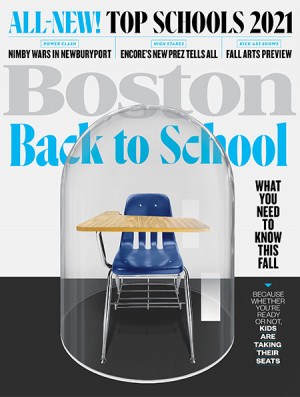Bright and Early: Everything You Need to Know About Preschool around Boston
Kingsley. Apple Orchard. Cambridge-Ellis. Ask around this brainy town, and parents will swear a happy life begins with the right preschool. But how early should the rat race really start? Clue: It’s younger than you think.
Don’t miss the rest of our 2018 schools feature: The Ultimate Guide to Boston Preschools.

Photograph by Ken Richardson
1. How early is too early, and how late is too late, for my child to start an early-education program?
Deciding when to shove your little one from the nest can be as heart-wrenching as dropping her off at college. The general consensus: Stop reading and enroll your budding Einstein right now. While this question is still hotly debated among parents, most experts believe the sooner, the better when it comes to early learning. “Neuroscience would tell us that preschool is already late for starting to address the foundations of school achievement, as well as lifelong health,” says Al Race, deputy director and chief knowledge officer of the Center for the Developing Child at Harvard. That said, every family situation is different, and if parents or caregivers are able to provide an enriching environment at home, it’s probably okay to wait a little longer. More concerned about how well Suzy plays with others? Social benefits start to accrue around age three, says Debra Sullivan, executive director of Beacon Hill Nursery School: “There is something about learning to be a part of a community of peers at that age that just starts to help them build those critical social, emotional, and interpersonal skills.”
2. What are all those different preschool philosophies with funny-sounding names, and how do I know which one is right for my child?
Listening to parents talk about early-education philosophies can be like hearing a bunch of confusing Italian ingredients rattled off at a pizzeria. But before you decide if you want to order Montessori or Reggio Emilia for your kid, here’s what you need to know. Many of the names bandied about are variations on the trendy child-centered philosophy, in which teachers support their students’ individual passions. Montessori schools such as Forest Hills, in J.P., offer mixed-age classrooms packed with sensory materials—colorful 3-D blocks to teach shapes, blue and red rods for measuring, and cutouts of letters so kids can spell words before they even learn to write. The Reggio Emilia method, practiced at places such as the Advent School in Boston, is less structured and more open-ended, likely to be driven by the interests of the kids (we imagine there might be a few insects and mud puddles involved). Even Boston Public Schools’ K1 program (BPS’s name for pre-K) focuses on a blend of play-based activities and academic instruction. Few schools, however, are strictly one model, Sullivan says, and that’s the way it should be: “My personal philosophy is that any good program is drawing from multiple things and best practices in early education—that we’re really focused on kids, and not on a particular philosophy.”

Photo by Ken Richardson / Ken Richardson
3. Why is preschool in Boston so damn expensive?
It might feel like you just finished paying off the delivery room bills for your little one, but don’t put that checkbook away just yet. It’s no secret that early education in Massachusetts is pricey: At an average of $14,256 per year for a four-year-old, in fact, our state ranks as the second-most-expensive place for childcare in the country, according to the national nonprofit Childcare Aware America. That’s partly because the cost of living is so high here, but that’s just one factor. Another is teacher-to-child ratios, which vary by state. Massachusetts requires one teacher for every 10 four-year-old students; by contrast, some states allow as many as 18 or 20 kids per teacher, according to the most recent available data collected by the U.S. Department of Health and Human Services. Factor in the number of hours required to cover working parents, and costs add up fast. Bostonians also pay more to give our children the best. Want outside play space? Enrichment activities? Organic snacks? “All of those enhancements to quality increase costs,” says Elise Gould, senior economist at the Economic Policy Institute, a nonprofit, nonpartisan think tank.
For those carrying a hefty mortgage and their own student loans on their back, however, there’s a glimmer of hope: Many towns offer district-run preschools with lower price tags than their private counterparts. The Public Schools of Northborough and Southborough, for example, offer a five-day preschool program that started at just $3,640 a year in 2017–2018—not exactly a bargain, but also not the price of a compact car. Because universal pre-K is not yet a reality in Massachusetts, spots are limited in most public programs, with many seats reserved for children with special needs, so brace yourself for the private school rat race.
4. How much structure is too much, or too little? Why do some schools encourage “creative play,” while in others, kids are learning Spanish?
Relax—unless you’re planning to keep up those language lessons every day until your child is 13, it’s not going to stick, says Martina Albright, director of the play-based Apple Orchard School in Brookline. Still, structure is a critical part of early education, even if it’s as simple as everyone lining up for the bathroom, then gathering in a circle before snack time. “That kind of rhythm is really important,” Albright says. It may also be invisible to the untrained eye: “In a well-run preschool program, that structure will be infused with lots of joy and movement and laughter and problem-solving.”

Photo by Ken Richardson
5. What happens if I get waitlisted?
Nothing smarts more than being shown the inside of the clubhouse only to be told to wait outside, possibly forever. First, know that you’re not alone. Keri Rodrigues, CEO of Massachusetts Parents United, an education advocacy group, was waitlisted three times—once for each of her three kids. And she’s well connected. “You feel like a failure if you don’t get your kid into the district pre-K,” she says. Then it’s a scramble to find a private option. Most schools will give you a realistic assessment of your chances of getting in based on where you are on the waitlist, but that’s not the end of the story. Predicting attrition is tricky, so calling and expressing your desire may help move you up the list. “It is important to let a school know of your interest,” Sullivan explains. “If a school truly is your first choice, that is helpful for us to know.”
6. My child has behavioral issues. How do I choose a good program for her?
This is challenging for any family, but it helps to be transparent and honest with the schools you’re considering. “A lot of parents’ first instinct is to cover it up, to try to make what they want happen,” says Lori Day, a Newburyport-based educational psychologist who offers admissions counseling for private schools as well as guidance and advocacy for special-education needs. “You do not want your child in a school where they are not going to be supported.” Second, read the school’s written behavior-management policy, then ask for specifics about how it gets implemented. Finally, if you haven’t done so, reach out to Massachusetts Early Intervention, a program for infants and toddlers at risk for developmental delays, to see if your child has a diagnosable condition. “If a child has undiagnosed ADHD, they may hit [another] child or run out of the classroom, and then it becomes a disciplinary issue,” Rodrigues says. “That is the first entry point in the school-to-prison pipeline, even that early, where your child is labeled as aggressive instead of high-spirited— especially in communities of color, where that becomes an issue.”
7. Why are so many boys in my child’s pre-K class being held back?
It’s not just an old wives’ tale: Research has shown that girls do tend to mature faster than boys, at least in terms of how early they optimize brain function. Boys are also four times more likely than girls to have ADHD and other behavioral, social, or learning disabilities, which can be hard to diagnose so young and sometimes present as a lack of readiness. And let’s not forget the arms race of “redshirting”—holding kids back to give them a size and age advantage, particularly when it comes to sports. “Expectations have wildly changed in a generation,” Day explains, noting that the emphasis on standardized testing has pushed learning to read and do basic math into pre-K, when fewer boys are mature enough to manage. So don’t get discouraged if Jackson has to spend one more year with the little kids—he’ll be graduating from high school before you know it.

Photo by Ken Richardson
8. Is there really such a thing as a feeder school at the pre-K level? Should I stress about that?
If your only objective in life is to get your kid into Yale, you’re probably better off saving your cash for a new biology wing than sending her to an elite private pre-K…but hey, we’re all human and want the best for our children. “You would be surprised how many parents of toddlers are talking to me about the pathway to the Ivy League,” Day says. While your four-year-old is undoubtedly a genius, don’t put the cart before the horse—focus on where you want your child to go directly after preschool. If you’re in the ’burbs or are planning to move before your child enters kindergarten, don’t sweat it—there is plenty of space in great schools at the next level that could lead to Harvard. But if your heart is set on a private primary school in Boston, ask about how graduates of your chosen early-education program fare with elementary admissions. “In Boston, it is pretty competitive,” Day notes. “Boston proper does not have a lot of private school options.” While she was loathe to name names, she says certain schools do cultivate relationships with the next level, so make sure to ask about it.

Photo by Ken Richardson
9. What is the latest thinking on screens? Do I want a preschool loaded with tech or one with none at all?
Whether you have Peppa Pig constantly queued up on the iPad or keep the devices dark until the kids are tucked in, most parents know where they come down on the great screen debate. Because philosophies on tech exposure are always changing, the best approach is to find a school with a thoughtful policy that matches what you believe is best for your child. “We still don’t know enough about the balance between what is good and what may not be good about screens to give just one recommendation,” says Jan van den Bulck, a professor of media psychology at the University of Michigan, who has been studying media use and its effects on health for 25 years. “Worse, today’s media world changes so fast that advice constantly becomes outdated.” So it’s perfectly okay to be the kind of parent who believes it is safest to avoid technology, or to be a parent who feels it is best to acclimate your child to media from an early age. Just “keep in mind that things change and so should your opinions if the need arises,” van den Bulck says.
10. Why won’t my kid’s teacher let him go barefoot/climb a tree/do anything fun?
To put it simply: lawsuits, lawsuits, lawsuits. In the age of overprotective parenting and overzealous attorneys, many schools exercise an overabundance of caution: “The thought of a child stepping on something sharp and the resulting parent freak-out—people don’t want to deal with it,” Albright says. Research, however, shows that kids learn through movement, so the Apple Orchard School recently instituted a “rough-and-tumble play policy” to let parents know that kids may come home caked in mud or missing a sock. “In our school,” Albright explains, “if everyone wanted to be on their bellies, wagging their feet and looking at the teacher in the center of the circle, all the better because they are getting that movement input they need in order to focus.”
11. My child is gender-nonconforming. How can I make sure the school I select will be supportive?
In a perfect world, which bathroom children use and what clothes they wear would be irrelevant, but the reality for families with trans kids is that they do need to consider the awareness of the preschool staff. “Schools should be willing and open to discussing how best to support your child,” says Mandy Coles, codirector of the Child and Adolescent Transgender Center for Health (CATCH) at Boston Medical Center. When touring a facility, look for toys and dress-up clothes that are not separated by gender. “If…the ‘boys’ stuff is on one side of the room and ‘girls’ stuff is on the other, that is not a good sign,” Day notes.
When it comes to talking to your child about gender-nonconforming kids at their school, it’s important to meet them on their level. “Younger children may have questions about a peer’s gender identity or pronouns, but for the most part, they are just looking for a nice kid to play with,” Coles says. “I think this is a lesson we can all learn from.”

